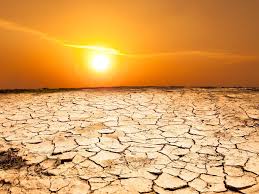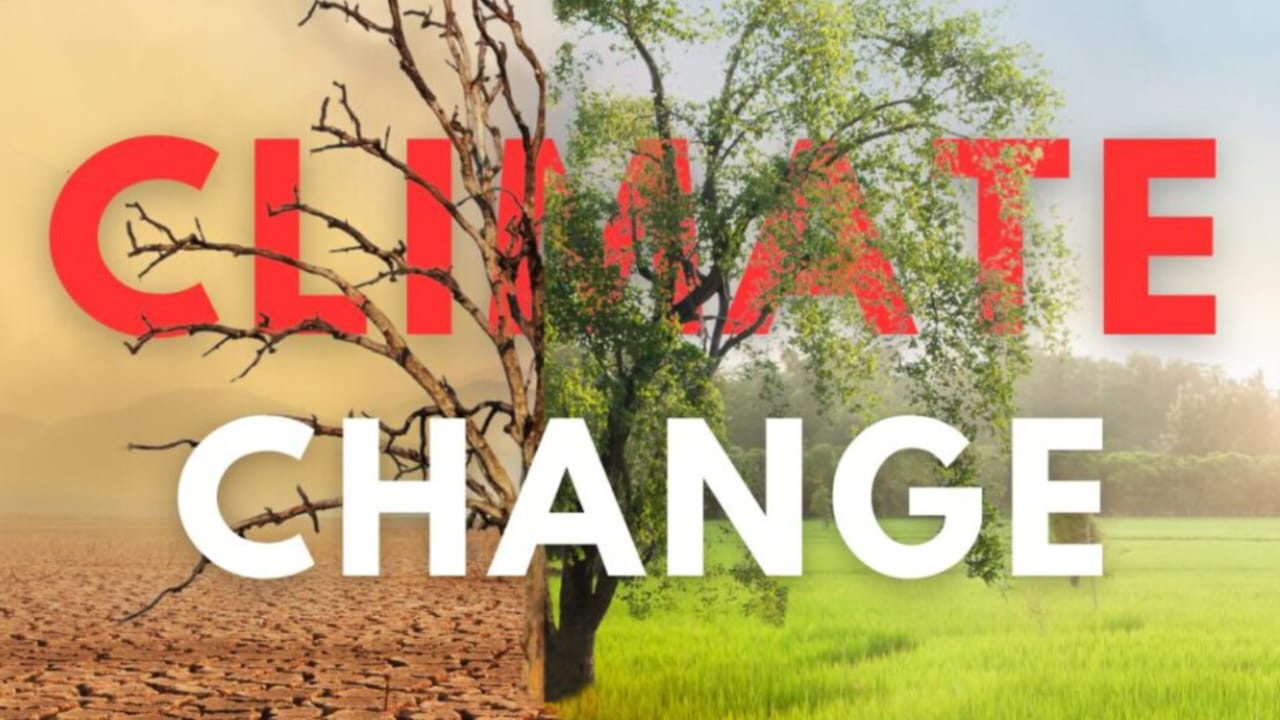Africa’s Cities Are Heating Up: Who’s Paying the Price of Urban Heat?

Introduction
On a scalding afternoon in Accra, market vendors flap cardboard to cool the air, sweat trickles under their masks, and the concrete beneath their feet radiates heat like a stove. In Lagos, children skip lunch recess because the classroom feels like an oven. In Nairobi’s informal settlements, corrugated roofs baked under the sun turn homes into heat traps.
These scenes are no longer anomalies, they are everyday realities in African cities. As climate change intensifies and urbanization accelerates, cities across Africa are becoming heat islands. But the people paying the highest price are those least equipped to cope.
This is not just climate alarmism, it is a crisis of justice, infrastructure, and survival. Who bears the burden, who acts now, and what solutions can stem the sweat and suffering?
Understanding Urban Heat Islands: Why Cities Get Hotter
Cities differ from rural surroundings in many ways: clustered buildings, asphalt, concrete, fewer trees, and denser human activity. Those materials absorb and trap solar radiation, releasing it slowly, especially after sunset. This phenomenon known as the Urban Heat Island (UHI) effect means city surfaces and air can be several degrees hotter than suburban or rural zones.
In East Africa, a 2023 study on tropical surface urban heat islands found that capitals can experience a UHI of between 1 °C in Dodoma (Tanzania) to as high as 4 °C in Kampala, and even up to 8 °C in Khartoum during peak times. The study also noted that daytime contributions from UHI averaged about 0.64 °C in those regions over two decades — a nontrivial boost to baseline warming.
In Nigeria, recent research in Kano (a semi-arid city) shows how decades of urban expansion have intensified heat stress — new buildings, paved roads, and loss of green cover exacerbate discomfort and risk. And in lesser-known cities like Lafia in Nasarawa State, remote sensing reveals that urban growth and receding vegetation have increased surface temperatures, worsening conditions for residents.
In short: Africa’s cities are heating faster than many expect and often faster than governments acknowledge.
The Human Cost: Who Suffers, and How
The danger of urban heat isn’t just theoretical — it manifests in lives lost, productivity shifted, and daily endurance tested.
Health & Vulnerability
Extreme heat triggers dehydration, heat exhaustion, and heat stroke. For older adults, pregnant women, children, and individuals with chronic illnesses, the risk is even greater. In slums or informal settlements, common across African cities, homes lack insulation, airflow, or shade, compounding exposure.
In Freetown, Sierra Leone, the city’s newly minted Heat Action Plan cites that informal settlements can be up to 6 °C hotter than surrounding areas. Residents in these zones face dangerous heat exposure with minimal coping options. The plan also emphasizes educating residents, mapping heat hotspots, and mobilizing youth as climate ambassadors to build resilience. Moreover, heat is a multiplier of inequality. Outdoor workers — vendors, construction laborers, transport workers, are exposed without breaks or shade. Their health is taxed, their earnings risked.

Economic & Productivity Impacts
When cities heat up, productivity drops. Tasks requiring concentration, physical work, or even routine labor slow down. In sectors like agriculture, manual labor, or outdoor markets, lost hours directly translate into lost income. Households spend more on electricity, fans, cooling, or water. In places where power is unreliable or costly, these coping costs drain budgets. Students struggle to study when homes and school rooms are sweltering. In Ghana’s Accra or Nigeria’s Lagos, middle-class homes with AC units still face skyrocketing electric bills; for the poor, the only option is to stop working or retreat indoors — and that’s not always possible.
Why Cities & Governments Lag Behind
If this is happening, why isn’t the alarm louder and why aren’t cities acting faster?
Weak Planning & Infrastructure
Rapid urban growth often outpaces planning. Many African cities expand without zoning, without green corridors, and without climate-adaptive design. Buildings block airflow; narrow alleys become tunnels of heat. Impervious surfaces dominate. The science is clear: impervious surfaces (roads, rooftops) absorb heat and reduce cooling. Cities rarely include heat resilience in their master plans. Many lack heat action plans or even the data to map heat vulnerabilities. But change is beginning: at the 2025 African Urban Heat Summit, cities including Accra and Monrovia were awarded grants to map UHI hotspots and develop resilience plans.
Sierra Leone also launched Africa’s first comprehensive Heat Action Plan.
Data Gaps & Unequal Resources
Many cities lack temperature sensors, heat maps, or fine-grained data to identify where heat is worst. Informal settlements, often excluded from official planning, are invisible in data sets.
Financial constraints make even basic interventions, cooling shelters, shade, tree planting — difficult for resource-strapped municipalities.
Policy Fragmentation & Institutional Silos
Climate, urban development, health, and water agencies often work in silos. Heat is a cross-sector challenge, but coordination is weak. Regulatory barriers, land-use restrictions, and lack of enforcement further impede green infrastructure or cool roof mandates.
Finally, heat is sometimes dismissed as a nuisance, not a crisis — until someone dies or falls ill. That delay in recognition delays action.
Community Innovations & Citizen Science
Where governments lag, communities and innovators are stepping up.
In Freetown, part of the Heat Action Plan involves mapping hotspots using mobile sensors, bikes, and stationary monitors, then targeting interventions in the worst zones.
Cooling tactics are emerging: reflective roofing (mirrored sheets) deployed in informal settlements reduce indoor heat substantially.
Civic groups are planting trees, building shade frames over markets, or converting waste to “cooling paint.”
Some cities across the world use “cool islands” (small urban green oases) to break up heat zones — a model African cities can adapt.
These grassroots solutions matter, they prove that change can begin at the block level, not just city halls.
What Must Change: From Reaction to Resilience
It’s not enough to complain, African cities need climate-smart, human-centric adaptations now.
Adopt Heat Action Plans
Cities must formally adopt plans that identify hotspots, warn residents, coordinate agencies, and fund interventions. Sierra Leone’s plan is a powerful precedent.Green & Cool Infrastructure
Trees, green roofs, shade canopies, permeable pavements, reflective surfaces — nature-based solutions reduce surface heat and improve comfort. Studies show thoughtful placement maximizes impact.Build Cooling Corridors
Strategic alignment of green belts and corridors so airflow runs through urban zones, breaking heat accumulation.Prioritize Vulnerable Zones
Focus first on informal settlements, slums, markets, where heat burden is highest. Equitable planning is not optional.Citizen Data & Participation
Equip local communities to map heat, report suffering, co-design interventions. Temperature monitors, phone apps, participatory maps — all usable tools.Policy Integration & Funding
Break silos: climate, health, urban planning must collaborate. Governments must allocate budgets, incentivize cool building codes, and promote private sector partnerships.Public Heat Education
Inform people about signs of heat stress, hydration practices, shifting activity hours. Early warnings, public alerts, media campaigns — critical for saving lives.
Conclusion: The Heat Reckoning Africa Can’t Ignore
The silent rise of urban heat is not just a climate footnote. It is rewriting how Africans live, work, rest, and struggle. In the slums, in the markets, on the roads, heat tests every moment of life and the productivity of humans.
But the story doesn’t have to end in exhaustion, illness, or despair. African cities have strength, creativity, community resilience. The challenge is to scale what works, to fund what must be funded, and to act with urgency and justice.
Because when Africa’s streets bake, its youth, its workers, its inventors, its mothers and children pay the price. The question is: will cities respond in time? Will they protect those who cannot afford insulation, shade, or escape? If Africa is to survive its cities, then resilience must be part of our identity — not an afterthought. And the cooler future we need is no longer optional. It is necessary.
You may also like...
Super Eagles' Shocking Defeat: Egypt Sinks Nigeria 2-1 in AFCON 2025 Warm-Up

Nigeria's Super Eagles suffered a 2-1 defeat to Egypt in their only preparatory friendly for the 2025 Africa Cup of Nati...
Knicks Reign Supreme! New York Defeats Spurs to Claim Coveted 2025 NBA Cup

The New York Knicks secured the 2025 Emirates NBA Cup title with a 124-113 comeback victory over the San Antonio Spurs i...
Warner Bros. Discovery's Acquisition Saga: Paramount Deal Hits Rocky Shores Amid Rival Bids!

Hollywood's intense studio battle for Warner Bros. Discovery concluded as the WBD board formally rejected Paramount Skyd...
Music World Mourns: Beloved DJ Warras Brutally Murdered in Johannesburg

DJ Warras, also known as Warrick Stock, was fatally shot in Johannesburg's CBD, adding to a concerning string of murders...
Palm Royale Showrunner Dishes on 'Much Darker' Season 2 Death

"Palm Royale" Season 2, Episode 6, introduces a shocking twin twist, with Kristen Wiig playing both Maxine and her long-...
World Cup Fiasco: DR Congo Faces Eligibility Probe, Sparks 'Back Door' Accusations from Nigeria

The NFF has petitioned FIFA over DR Congo's alleged use of ineligible players in the 2026 World Cup playoffs, potentiall...
Trump's Travel Ban Fallout: African Nations Hit Hard by US Restrictions

The Trump administration has significantly expanded its travel restrictions, imposing new partial bans on countries like...
Shocking Oversight: Super-Fit Runner Dies After Heart Attack Symptoms Dismissed as Heartburn

The family of Kristian Hudson, a 'super-fit' 42-year-old marathon runner, is seeking accountability from NHS staff after...






